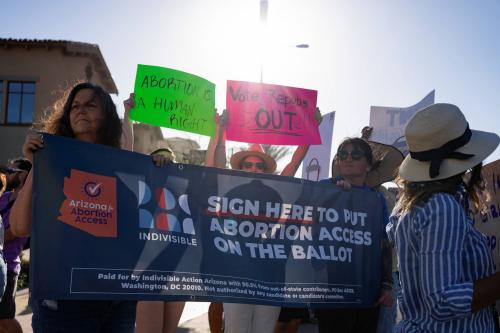You are about to move into the Oval Office—one of the most dramatic, architecturally satisfying rooms in the world—and you are going to have to make a basic decision: do you wish to admire it or work in it?
Clearly, this is a great ceremonial place. You will call in members of the press pool to snap photos of you chatting with world leaders, with the marble mantel of the fireplace in the background, the presidential seal set in plaster on the ceiling, the flags of the United States and the president behind the desk. But is this really where you want to roll up your sleeves, spread out your papers, loosen your tie and work?
I have worked in the White House twice, for two very different people, and their answers were yes (Eisenhower) and no (Nixon). The Oval Office was where President Eisenhower chose to conduct the affairs of state. He didn’t even bother to change the green carpet and draperies from Harry Truman’s occupancy. Nixon, on the other hand, established his serious workspace across the gated West Executive Street and up a flight of stairs in Room 180 of the Executive Office Building (since renamed the Eisenhower Executive Office Building). It was here that Nixon probably had a hole drilled into his desk to secure the wires to the machine that was taping “Watergate” conversations. The Oval Office was relegated to the ceremonial place.
##1##
The president who made himself most at home in the Oval Office was John F. Kennedy. He brought in a rocking chair to ease his back pain; his collection of ship models; maritime paintings (instead of presidential portraits); a silver goblet from New Ross, Ireland, the town from which his great grand-father set off for America; a watercolor of the White House painted by his wife; a chair from his student days at Harvard; and a plaque, given to him by Admiral Hyman Rickover, inscribed with the words of the Breton fisherman’s prayer: “O, God, Thy sea is so great and my boat is so small.” On his desk, encased in plastic, sat the coconut shell carved with the message that led to his rescue after PT-109 was cut in two by a Japanese destroyer in the Solomon Islands.
Other presidents added their own personal touches. Reagan gave the Oval Office a distinctly Western flavor with Remington cowboy sculptures and miniature bronze saddles. George H. W. Bush featured blue and white, the colors of Yale, his alma mater. His son hung scenes of Texas by Texan artists on loan from Texas museums.
In addition to deciding which portraits to hang in the Oval Office, you will have to choose which desk you will use there. The options, however, are limited to four historic desks—the Resolute Desk, the Theodore Roosevelt Desk, the Wilson Desk, and the C&O Desk—or bringing your own.
The Resolute Desk:
The Resolute Desk is a partner’s desk, meaning it was designed to accommodate a person sitting and working on either side. Franklin D.
Roosevelt, however, chose to add a center panel with a carved Seal of the President in order to hide his iron leg braces from view and to conceal a safe. While the desk has been used often by presidents since 1880, Kennedy was the first to put it in the Oval Office. Carter, Reagan, Clinton, and George W. Bush also used the Resolute Desk in the Oval Office.
Theodore Roosevelt Desk
This is the original West Wing desk, made in 1902 for Theodore Roosevelt, used in the Oval Office by Taft, Wilson, Harding, Coolidge, Hoover, Franklin D. Roosevelt, Truman, and Eisenhower. Nixon chose this desk for his “working office,” Room 180 in the Eisenhower Executive Office Building, and presumably the Watergate tapes were made by an apparatus concealed in its drawer. Its practicality is that it has a larger surface than the Resolute Desk.
The Wilson Desk
The Wilson Desk was used in the Oval Office by Presidents Nixon and Ford. This was Nixon’s desk in the Capitol when he was vice president, and he requested it for the White House. His attachment stemmed from his belief that the desk once belonged to Woodrow Wilson. Unfortunately the following footnote in the 1969 edition of Public Papers of the Presidents noted: “Later research indicated that the desk had not been President Woodrow Wilson’s as had long been assumed but was used by Vice President Henry Wilson during President Grant’s administration.”
C&O Desk
The C&O Desk was used in the Oval Office by George H. W. Bush, who moved it from his vice presidential office in the Capitol. It is a handsome reproduction of an eighteenth-century English double pedestal desk, with a full set of drawers on each side, made around 1920 for the owners of the Chesapeake & Ohio Railway. It was later donated to the White House and used by Ford, Carter, and Reagan in the West Wing Study.
Your Own Desk
You can, of course, bring your own desk with you to the Oval Office, as did Lyndon Johnson. The Johnson desk is now in the replica Oval
Office at the LBJ museum in Austin, and, I am reliably told, the retired president sometimes sat at the desk to surprise unsuspecting museum visitors.



Commentary
What Now? The Oval Office
January 8, 2009